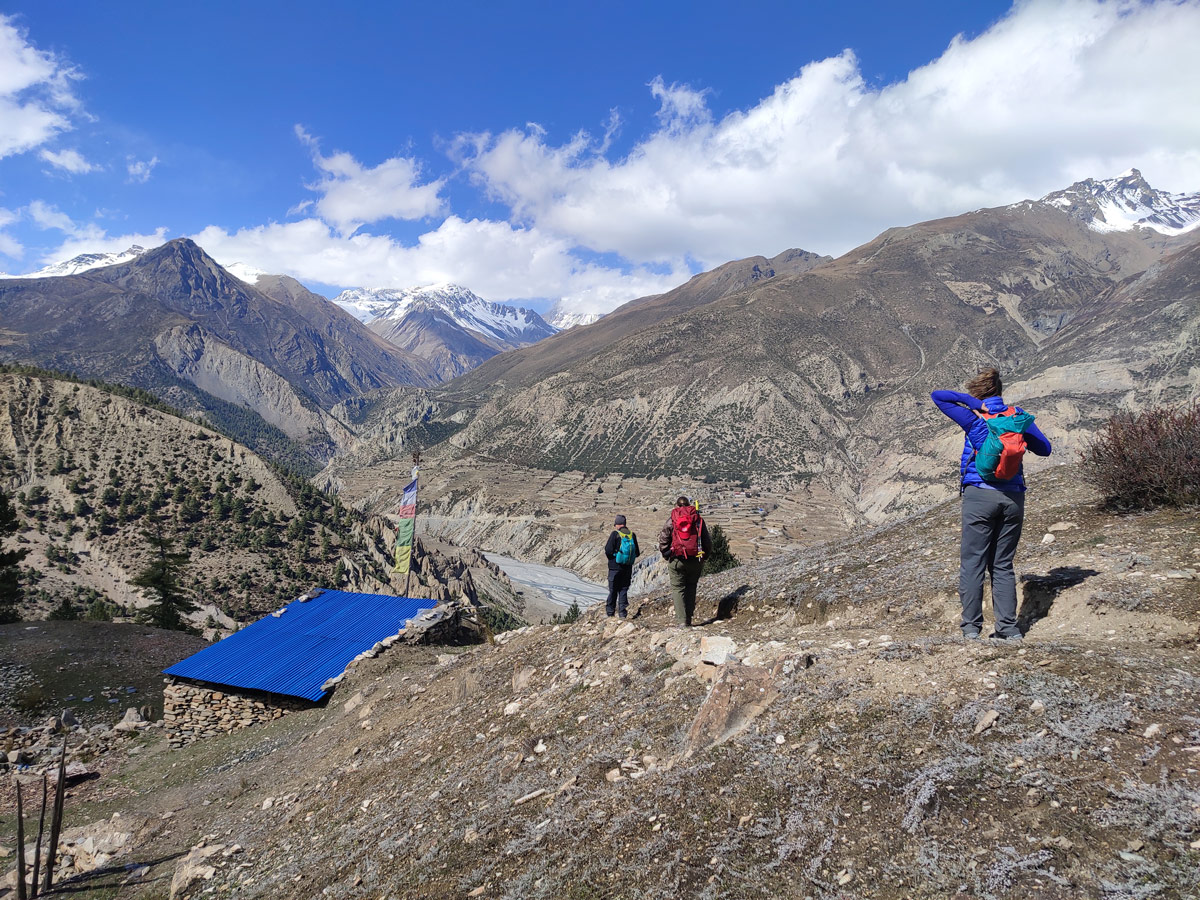Known as the trekker’s paradise, Nepal is home to several trekking routes. And these trekking routes traverse through towering snow-capped peaks and vibrant cultural tapestry.
Nestled in the heart of the Annapurna region of Nepal, there is a beautiful village of Manang situated at an altitude of 3,540 meters. This is a picturesque Himalayan settlement.
Besides that, it is also a crucial acclimatization stop on the Annapurna Circuit Trek which is one of the most popular and iconic trekking routes of Nepal that attracts trekkers from all over the world.

In high altitude treks such as Annapurna Circuit Trek, stops like Manang become a necessity. Spending two or more nights in Manang gives your body the time it needs to adjust to the thinner air before taking on high-altitude challenges like the Thorong La Pass (5,416 m).
During this time, you can enjoy various rest day activities in Manang, which not only help with acclimatization but also allow you to explore the local culture, scenery, and nearby hiking routes.
And what better way to acclimatize than with scenic day hikes? Therefore, in this blog, we will be discussing the different acclimatization hikes from Manang that can help you continue your trek further.
Why Acclimatization Matters?
Before we look towards the different acclimatization hikes from Manang, it is imperative to understand what exactly acclimatization is and why is it so important.
When you ascend towards higher altitudes, your body is suddenly being asked to perform optimally with significantly less fuel as these regions have thin air and much less oxygen. This is what leads to acute mountain sickness (AMS).
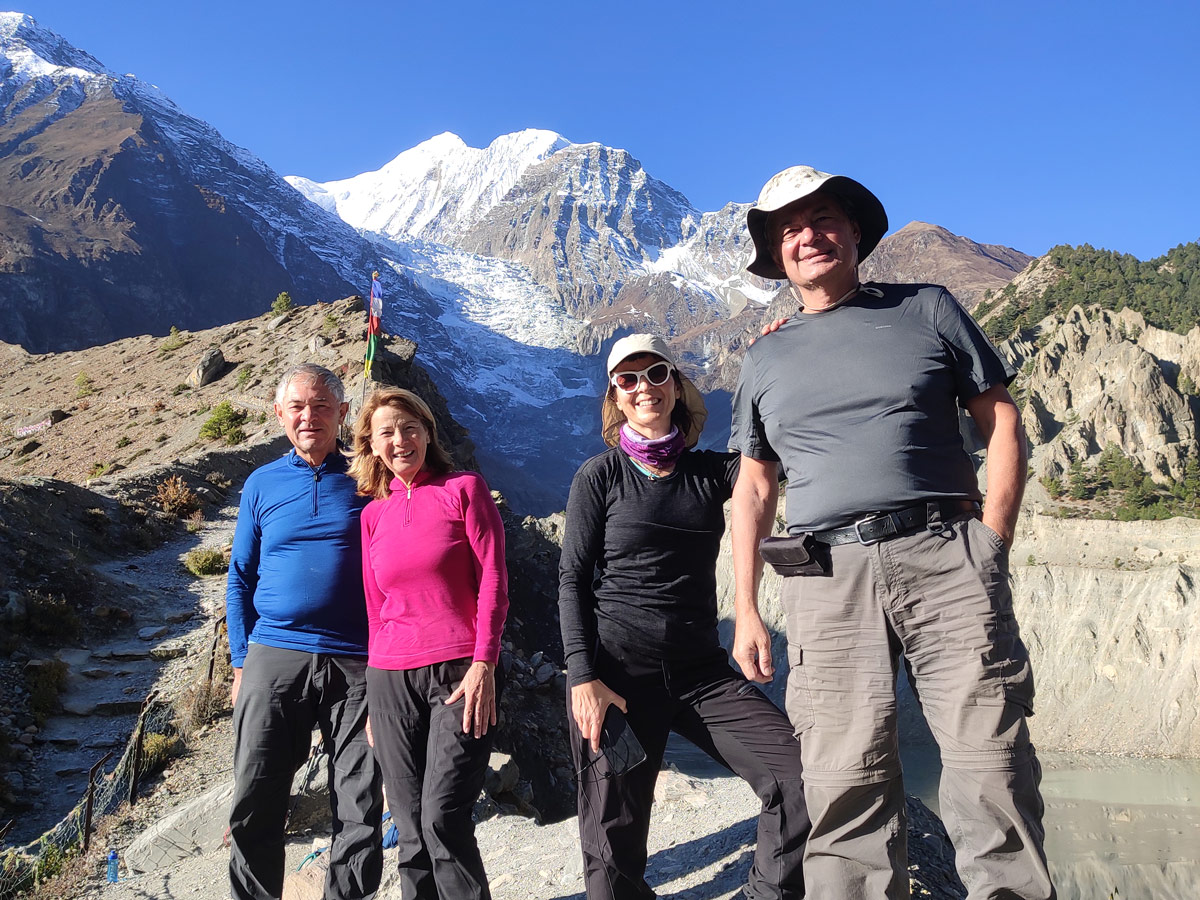
This reduced oxygen availability can trigger a cascade of physiological responses including headache, nausea, loss of sleep, loss of appetite, and sometimes even leading to life threatening conditions like High Altitude Pulmonary Edema (HAPE) and High-Altitude Cerebral Edema (HACE).
The main cause for this beyond the lack of enough oxygen is ascending too quickly and not allowing your body sufficient time to adapt to the reduced oxygen. While individual susceptibility varies, rapid elevation gain is the most common trigger.

Therefore, acclimatization is extremely important to prevent altitude sickness. It literally means giving your body the much needed time and efforts to be able to adapt to the changes in oxygen level.
Acclimatization hikes work on the principle of “climb high, sleep low”, which is the cornerstone of high altitude trekking. By hiking to a higher elevation during the day and returning to sleep at a lower elevation, your body starts to adapt to the lower oxygen environment.
Why Manang is the Perfect Acclimatization Stop?
Manang valley is one of the most crucial points of the Annapurna Circuit Trek, and it is for all the right reasons. The location and the altitude of the place gives it enough leverage to be a perfect resting stop as well as acclimatization point.
While you start your journey of the exploration of Annapurna circuit from an altitude of 760 meters at Besi Sahar, by the time you will have reached Manang, around 7 days would have passed, and you would have covered an altitude difference of around 2,780 meters.

Now, this elevation difference is significant. The 7 days of trekking will have left you exhausted. And in Manang that sits at an elevation of 3,540 meters, you can find the perfect resting stop.
Set against the backdrop of towering peaks like Annapurna III and Gangapurna, Manang is more than just a mountain village. It is a cultural and logistical base for trekkers to rest, recover, and explore.
While in Manang, you will find lots of things to do as the valley features comfortable teahouses, internet cafes, bakeries, trekking shops, and even a hospital with altitude sickness care- the Himalayan Rescue Association (HRA) clinic.
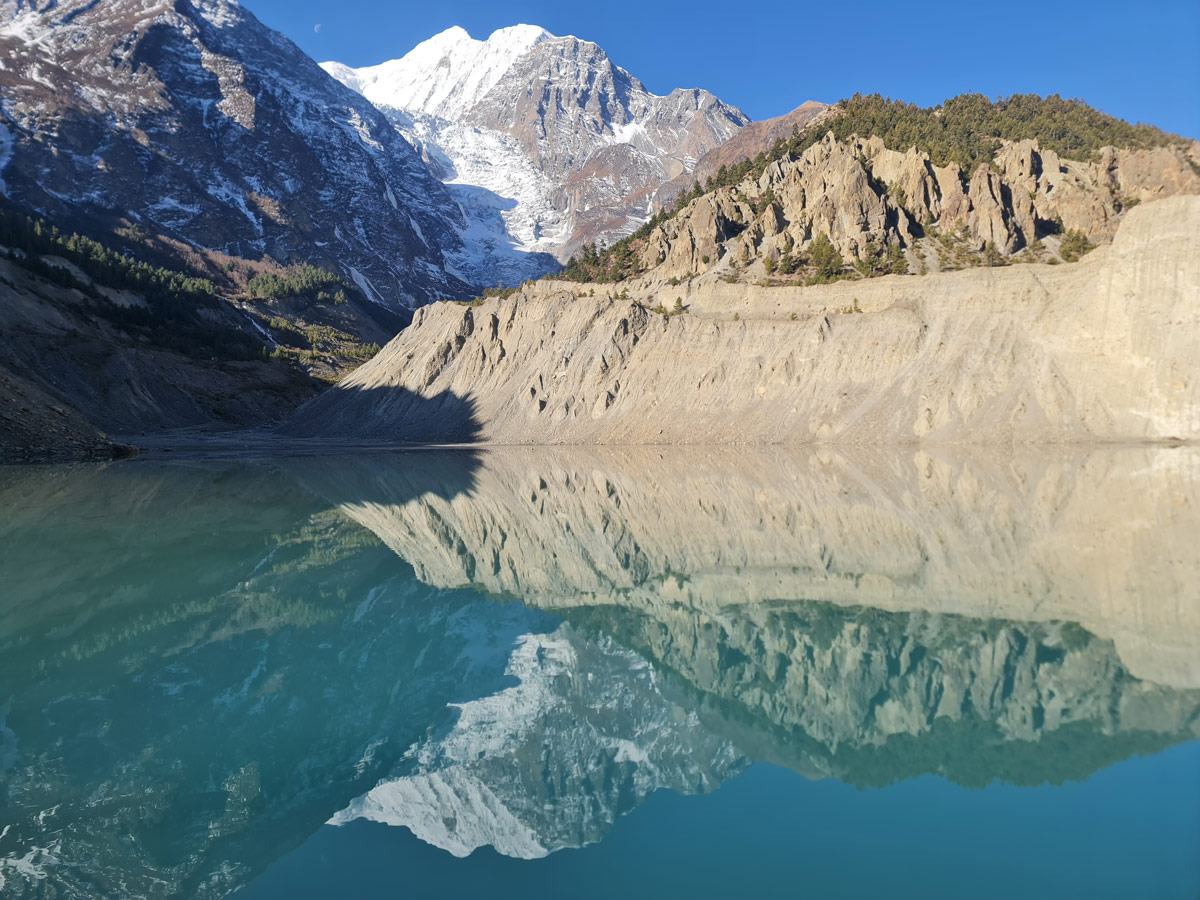
As the place is home to the Manangi people with Tibetan-Buddhist traditions, gompas (monasteries), and a fascinating high-altitude lifestyle, you can also indulge in the absolutely delicious Manangi cuisine.
Mainly, Manang is surrounded by numerous hills and viewpoints that are perfect for acclimatization hikes that allow you to ascend to a higher altitude during the day to further stimulate acclimatization, and then return to the relatively lower sleeping altitude of Manang.
Top Acclimatization Hikes from Manang
Being one of the major acclimatization points in the Annapurna Conservation Area, Manang offers several acclimatization hikes suitable for people of different fitness levels and time constraints.
Hike to Gangapurna Lake & Glacier Viewpoint
This is one of the easiest acclimatization hikes that one can go to from Manang as it takes only around 2 hours to take a round trip from Manang to Gangapurna Lake, which is formed by glacial melt from the Gangapurna Glacier.
Located at an altitude of 3,800 meters, even the ascent is not very challenging. And the views here are absolutely breathtaking as you will be treated to the turquoise waters of Gangapurna Lake with the glacier and icefall in the background.
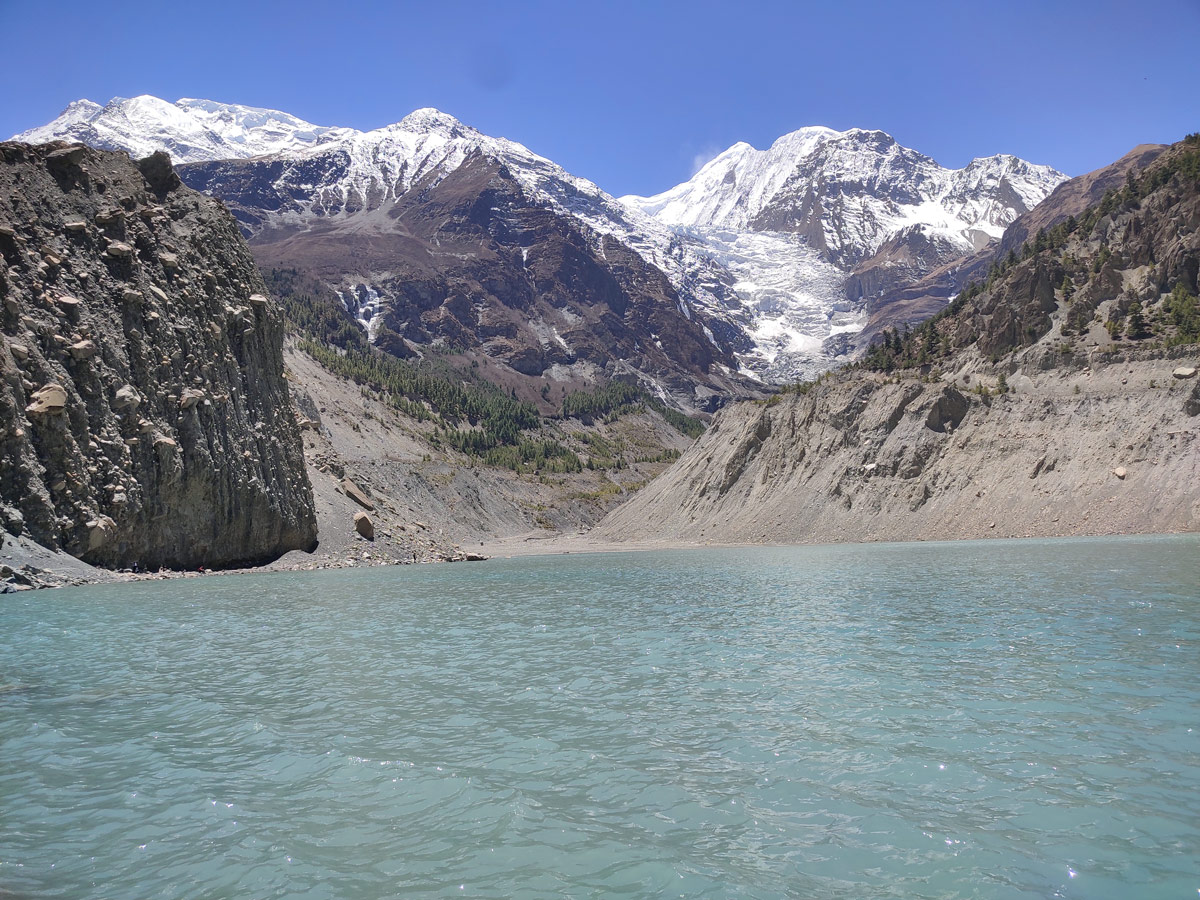
The ascent towards Gangapurna Lake is well marked, relatively flat, gradual and easy to accomplish. You can comfortably sit here and enjoy the breathtaking scenery before you make your way back to Manang.
As you near the lake and viewpoint, you will find an informative glacier viewpoint with educational boards accompanied by the stunning views of Annapurna IV, Gangapurna, and Tilicho Peak. This can be your chance to gently stretch your legs and get your blood circulating.
As you move towards this hike, wear layers as the weather can change pretty quickly. Carry water and snacks, but bring back all the waste along with you for a sustainable hike. Take your time and enjoy the tranquility of the lake.
Hike to Chongkor Viewpoint
Located directly above Manang, a hike to Chongkor viewpoint is yet another easy acclimatization hike that will take you only around 2 to 3 hours for a round trip from Manang.
This acclimatization hike from Manang takes you up to an altitude of around 3,900 meters, and this viewpoint does complete justice to your day as it provides panoramic vistas of the entire Marsyangdi Valley and surrounding peaks.

The trail is moderately challenging as it involves a steady climb that will take you zigzagging through dry alpine terrain. However, the ascend is not rapid, it is gradual and you won’t be rushed.
As you reach the top, you will find colorful prayer flags fluttering in the wind. This also makes for a stunning photography spot. If you want to avoid piercing sunlight, you should hike here in the early hours of morning.
Hike to Bhojo Gumba
Bhojo Gumba is a significant stop in the Annapurna Circuit Trek. This is a small yet colorful and vibrant monastery that is perched on a hillside that overlooks Manang valley.
To reach Bhojo Gompa from Manang, you will need to embark on a short but rewarding hike uphill to the ridge overlooking Manang. While the ascent might be challenging, this perfect monastery is a worthy acclimatization hike.
By undertaking this hike, you will be getting a true glimpse into the local Buddhist culture and the spiritual side of Manang. From this ridge, you will also get panoramic views of the Manang Valley and surrounding peaks.
While you do have to ascend, the altitude difference is not much. This hike will only take you up to an elevation of around 3,650 meters. This entire hike is merely a round trip of around 1 to 1.5 hours.
While the initial ascent can be a bit steep, but it’s relatively short and manageable. The altitude gain is gentle, and you will get the cultural experience of visiting a monastery, and excellent views of Manang and the valley.
With the number of rewards you get for a slight challenge, I would say the barter is pretty much on your side. Make sure to be respectful when visiting the monastery. Dress modestly and ask for permission before taking photos inside.
A Day Trip to Khangsar Village
For a more substantial acclimatization hike from Manang, you can always consider a day trip to the traditional village of Khangsar which is situated at a slight distance from Manang and is a key stop in Annapurna Circuit with Tilicho Lake Trek.
It is a longer trek that takes you through interesting landscapes and allows you to explore more of the Annapurna region while offering a fascinating glimpse into the unique architecture and culture of this ancient settlement.

Located at an elevation of approximately 3,734m, Khangsar isn’t as high as it is far from Manang. To reach here, you will most likely ascend and descend slightly along the way.
The journey to Khangsar from Manang is a round trip of almost 5 hours and it is a moderate hike, more so in terms of distance rather than elevation. The trail is longer and involves more undulating terrain.
While longer, going to Khangsar can be slightly beneficial as there is more significant altitude gain for better acclimatization, immersion in local culture, and exploration of a traditional Himalayan village.
Hike to Praken Gompa and Milarepa Cave
A significant spiritual site in the Himalayas of Nepal, Praken Gompa also lies in close proximity of Manang. And going here can be a good acclimatization hike along with a chance to delve into spirituality.
Located at an elevation of approximately 4,100 meters, this monastery is located above Manang. You will reach here as you head east of Manang, and it is best for those wanting a cultural and spiritual touch during the trek.
In Praken Gompa, a resident monk offers blessings for safe passage over the challenging Thorong La Pass which is one of the highest walkable mountain passes, and many trekkers cherish this meaningful ritual.
Beyond Praken Gompa, you can also continue further upwards towards the Milarepa caves, which is believed to be the meditation site of the revered Tibetan saint Milarepa.
Milarepa practiced meditation and achieved enlightenment in these caves. Therefore, it holds deep spiritual significance in Tibetan Buddhism and is a place of pilgrimage for those seeking inspiration and connection to his teachings.
Overall, the hike to Praken Gompa and Milarepa caves is an excellent combination of spirituality, culture, and altitude gain.
Hike to Ice Lake (Kicho Tal)
A popular destination for trekkers acclimatizing in Manang, Ice Lake (Kicho Tal) is situated at a higher altitude of around 4,600 meters. This hike can be slightly more challenging than other acclimatization hikes.
The Ice Lake is also one of the major attractions of the Annapurna Circuit Trek as it is a stunning alpine lake. Set against snow-capped mountains, the lake reflects Chulu Peaks, Annapurna II, and IV.
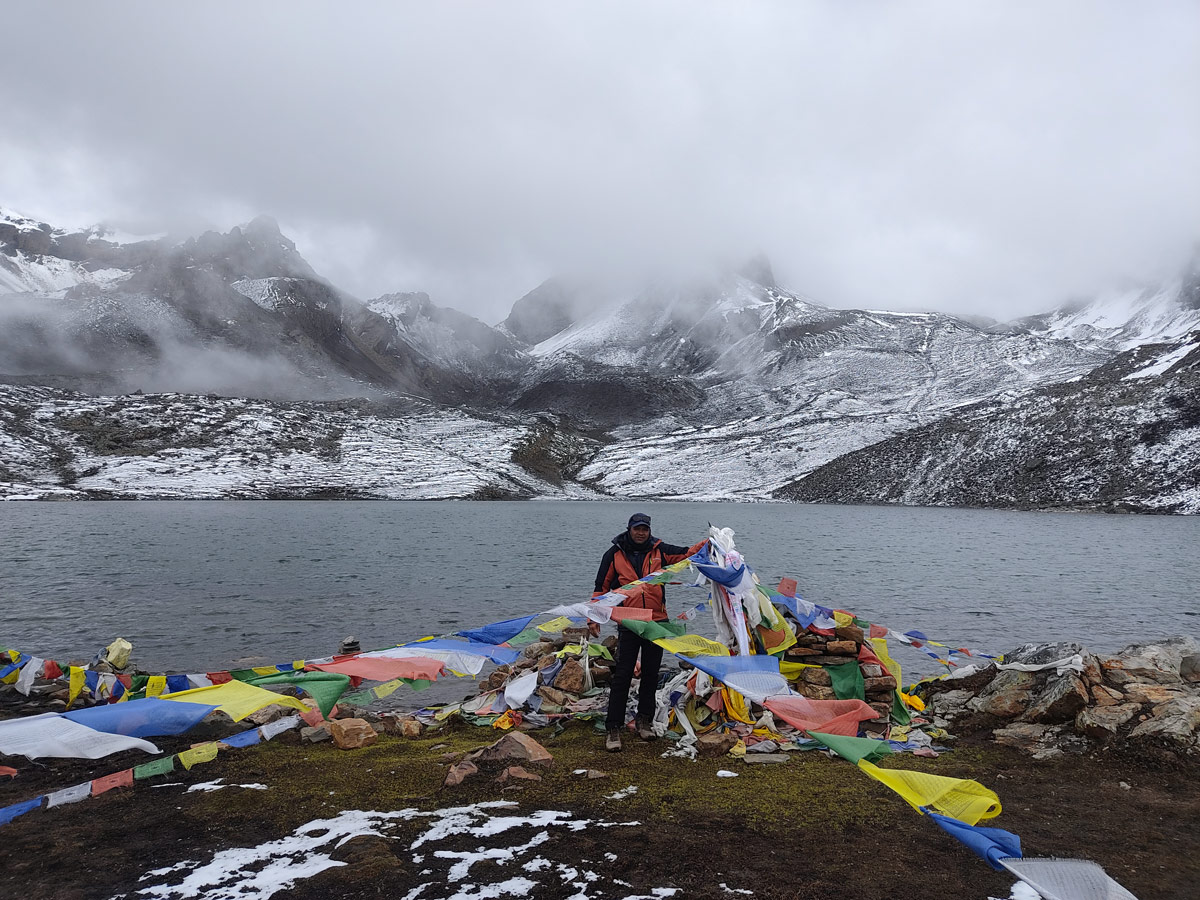
The trail features steep sections which can be slightly hard to tackle. You will get gradual exposure to higher altitudes, stunning views as you ascend, and the flexibility to turn back whenever you feel necessary.
However, this acclimatization hike does require a great deal of physical fitness, and it is not for everyone. Only go on this hike if you are truly confident about your climbing ability. And be prepared to stop mid-way.
Tips for a Successful Acclimatization Hike
- You should ascend gradually during your hike, typically gaining a few hundred meters in altitude, and then descending back to Manang. Avoid pushing yourself to reach the absolute highest point of any trail.
- Stay hydrated at all times as dehydration can worsen the symptoms of altitude sickness. Drink plenty of water before, during, and after your hikes. Carry a water bottle, hydration pack, or energy drink and sip frequently.
- Avoid consuming alcohol or caffeine during your acclimatization hike as it might leave you further dehydrated.
- Pay close attention to how you feel. If you experience any symptoms of AMS, even mild ones, stop ascending and rest. If symptoms worsen, descend immediately without further thoughts. You can always ascend again later.
- Maintain a pace where you can comfortably hold a conversation. ‘Slowly and steady’ is the mantra of high-altitude trekking.
- Eat light and easily digestible meals. Focus on carbohydrates for energy and an overall balanced diet.
- Wear layers of clothing to adjust to changing temperatures. Comfortable and supportive hiking shoes are essential. Don’t forget sun protection at such a high altitude!
- As a general guideline, once you are above 3,000 meters, try not to sleep more than 300-500 meters higher than the previous night.
